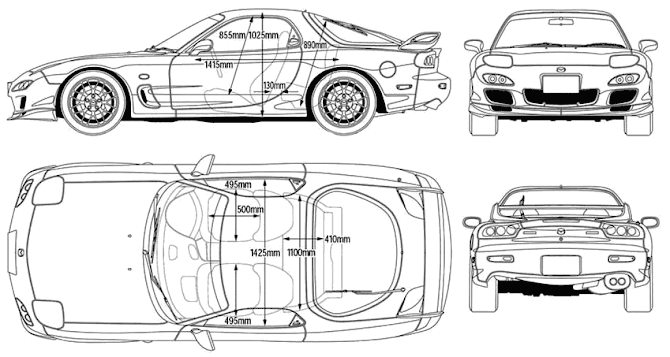Sunday, March 30, 2008
Posted by Fy_Zz at 5:18 AM 0 comments
A giant of the modern game
Few critics would argue that Danish legend Peter Schmeichel was during his prime the best goalkeeper in the world.
Schmeichel made his name at Manchester United where he was a pillar at Old Trafford during a trophy-laden 8-year spell, but he first came to international prominence at the 1992 European Championships when Denmark stunned the footballing world with an unlikely victory after stepping in for the expelled Yugoslavs.
Danish goalkeeper Peter Schmeichel vies in a friendly soccer match between Denmark and Slovenia at Parken stadium 25 April 2001. After having defended the Danish goal in 128 games in the past 14 year, Peter Schmeichel retired from the Danish national team after the final whistle of this game. (DENMARK OUT) Following his spell at United the highlight of which was the 1999 Treble winning season that included the Champions League, Schmeichel also added a Portuguese championship medal to his cabinet tending goal for Sporting Lisbon.
Standing 1.94m tall and weighing around 99kg, Schmeichel's huge physical presence appeared to block all routes to his goal but he was surprisingly agile and his fierce will to win puts him alongside some of the great goalkeepers of all time including Lev Yashine, Gordon Banks and Dino Zoff.
Denmark's most capped player, Schmeichel was heavily influential in Manchester United's re-emergence as a major force in English and European football during the 1990s.
Posted by Fy_Zz at 3:56 AM 0 comments
Wednesday, March 26, 2008
ICT APPLICATION IN ENGINEERING
ABSTRACT
Information and Communication Technology (ICT) can be defined as the study of the technology used to handle information and aid communication. IT has and will cause great changes that affect all organisations, work content, business, physical and virtual products, and tools in all aspects of modern society. The introduction of modern information and communication tools can help generating an enhanced and flexible learning environment. Further more within civil engineering education it is of great importance to be aware of what changes are relevant for the building sector.
In adapting to the ongoing process it is possible to outsource specific competencies, but also form strategic coalitions in new interdisciplinary ways. In today’s and even more in the future building industry, it will be necessary for civil engineering graduates to take actively part in managing,design, implementation and evaluation of tomorrows building process support systems.
Keyword : ICT application , engineering education.
INTRODUCTION
Nowadays,we can see that the ICT application is the most important parts of engineering education.In this technological era,engineering education can’t be done without ICT application.Imagine that the engineer used to draw the project manually using their hand.It will take a long time and the measurements in the drawing are not too accurate.This problem can be avoided if the engineer use the ICT application.in this case,he can use Auto Cad for accurate measurements in drawing and the tidy works.One more example,imagine that the engineer should count many numbers by themselves manually.Maybe the engineer will be ‘crazy’ because of that numbers.So,we can conclude that ICT applications and engineering education has their own relationship that we can’t deny.
OBJECTIVES
Every works that we done must have their own objectives.The works will only can be categorized as successful if the objectives had achieved successfully.In this case,ICT application is used in engineering education to make the works become more easier.With ICT application,all informations can be achieved only on the fingertips.The next objective is ICT applications help us to produce the products that have high quality.If we make the product manually,maybe the quality is not better than the product that had been produced using ICT applicatios such as machines and some program.Using ICT applications,we are also can produce extraordinary products that can’t be done by ordinary people.As an ordinary people,our potential to produce something has the limit but using ICT applications,anything that we don’t expect can be done easily. We are also can communicate with others that live far from us or live in other country.With this way,we can share anything with them.Next objective is we can produce many products in shorter period of time that we can’t do by ourselves.
METHODOLOGY/WAYS OF DOING THINGS
In order to realize ICT applications in engineering education,the government should reveal the machines that been used and their applications to students through some subject such as living skill.Then,they would also build more training centre for youth such as Institut Kemahiran Belia Negara,Insttitut Latihan Perindustrian,Community College and many more.By this way,the youth can learn how to use the machine.This will be revealed to them after they had finished their study in school.Another way is using latest machines totally in factories and workplaces.Besides using the latest machines,the youth should be revealed with the latest technology during their studies.The government also should give encourages to students so that they can produce something new related to ICT applications.In this case,the best country to be the example is Japan.Lastly,the Ministry of Education should legislate new syllabus about machines usage for engineering students.
RESULT AND DISCUSSION
For this part,we will give the example of ICT applications in engineering education.Our first example is car.Car manufactured give us big impact in our daily life.Using the car,we can travel everywhere easily.It also make us able to travel faster.For example,if we are in Alor Setar,Kedah and want to go to Seremban,Negeri Sembilan,we just take 6 hours when we travel by using the car.Besides that,we can go everywhere with our friends or family together.If we compare the car and the motorcycle,we just can travel with one passenger only while if we use car,we can travel with 5 or 6 passengers.So,our journey will be more interesting.Our next example is moulding machine.This machine make us able to design the product easily.We just set the shape,material that we want to use and the size,the product that had produced will be in front of us according to that informations.Using the mold,we will be able to produce the same product with the same size and shape.Then,the example is cutting machine.This machine can be used to cut the workpiece made by metl easily.We just put the workpiece on the machine and with just one button,the workpiece will be cut.So,that’s all the example for the result if we apply the ICT in engineering education.
CONCLUSION
As the conclusion,ICT application make our life become more easier.Using ICT,we can produce the products that have high quality.So,our product will attracting people to have it.ICT application also is one of the most important part in engineering education.Without that application,maybe engineering education can’t be done successfullly.In other word,the ICT application is the most important element in engineering.If we not apply the ICT,we will have the problem that we create by ourselves because blindness about ICT.For example our course,manufacturing,we use ICT application to produce item that impossible to do using man power such as stamp car.The other example is machine ICT.This machine can detect wrong insert in connecter because it check the electrical flow in the wire.Lastly,we can conclude that ICT can affect our lives in the future.
ACKNOWLEDGEMENT
Alhamdulillah,thank you to Allah because with his bless, inayah and hidayah we can finish our group assignment. We also want to thanks to our lecturers, Pn. NoorMaizatul Akmar binti Ishak, Encik Zukime bin Mat Junoh because of their guide, we can complete this group assignment succesfully. They teach us about ICT and how to use ICT in daily life correctly. We get new knowledge about ‘THE ICT APPLICATION IN ENGINEERING EDUCATION’. We also teach how to use EBSCOhost online access as a reference. Firstly, we would like to introduces our member group, Muhammad Hudzaifah bin Che Omar, Osman Bin Jamaludin, Muhammad Shafiq bin Mohd Shukri and Mohamad Hafizi Bin Omar and if no co-operation around us, we can’t finish this assingment. It is also because of support from our surroundings and many other individuals that give us contribution to us make our project become reality. We also want to thank to our classmate because they support us from behind. They give some informations about ICT how to do this assignment. They also give us some ideas how to create a good paperwork.Without them we can’t complete this assignment.
REFERENCES
1.Lapierre J. & Medeiros R.(2006),Information and communication technology usage patterns:a case study,
2.Hua G.B.(2007),Applying the strategic alignment model to business and ICT strategies of Singapore’s small and medium size architecture,engineering and construction enterprises,Taylor & Francis Group,Singapore.
3.Feldman M.,Gertler M. & Wolfe D.(2006),University technology transfer and national systems of innovaton:Introduction to the special issue of industry and innovation,
4.Palvia S.C.J. & Palvia P.C.(2007),The effectiveness of using computers for software training:an exploratory study,
5.Zhang Y.,Gregory M. & Shi Y. J.(2007),Global engineering networks:the integrating framework and key patterns,Department of Engineering University of Cambridge,United Kingdom.
6.Zeying W.,Yulin F. & Neufeld D.J.(2007),The role of Information Technology in Technology-Mediated learning:a review of the past or the future,Canada & Hong Kong.
7.Aanestad. M,Monteiro E. & Nielsen P.(2007),Information infrastructures and public goods:analytical and practical implications for SDI,Wiley InterScience,
8.Daveri F. & Maliranta M.(2007),Age,seniority and labour costs:lessons from the Finnish IT revolution,
9.Griffiths G.,Oates B.J. & Lockyer M.(2007),Evolving a facilitation process towards student centred learning a case study in computing,School of Computing University of Teesside,United Kingdom.
10.Puri S.K. & Sahay S.(2007),Role of ICTs in parcitipatory development:an Indian experience,Department of Informatics University of Oslo,Norway.
11. The official website of Universiti Malaysia Perlis. http://www.unimap.edu.my.
Posted by Fy_Zz at 11:15 PM 0 comments





.jpg)
.jpg)

